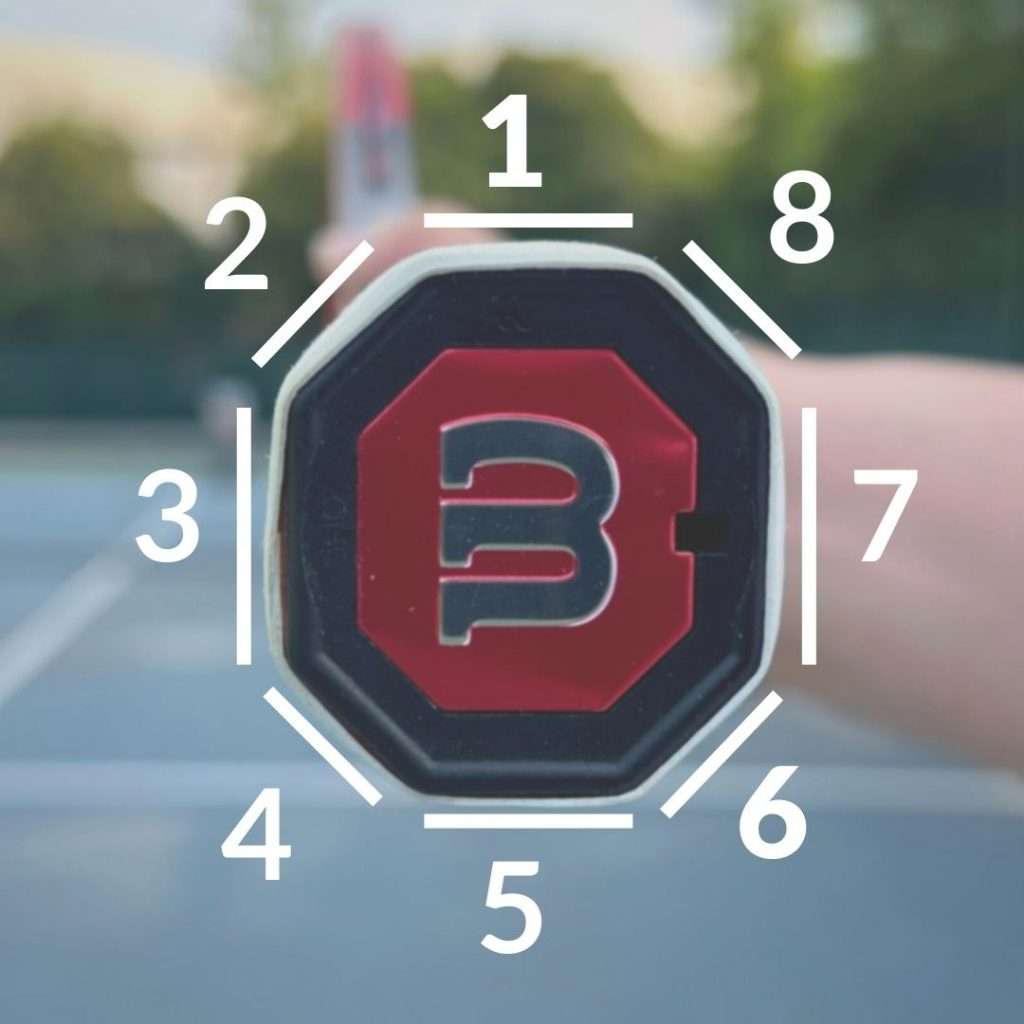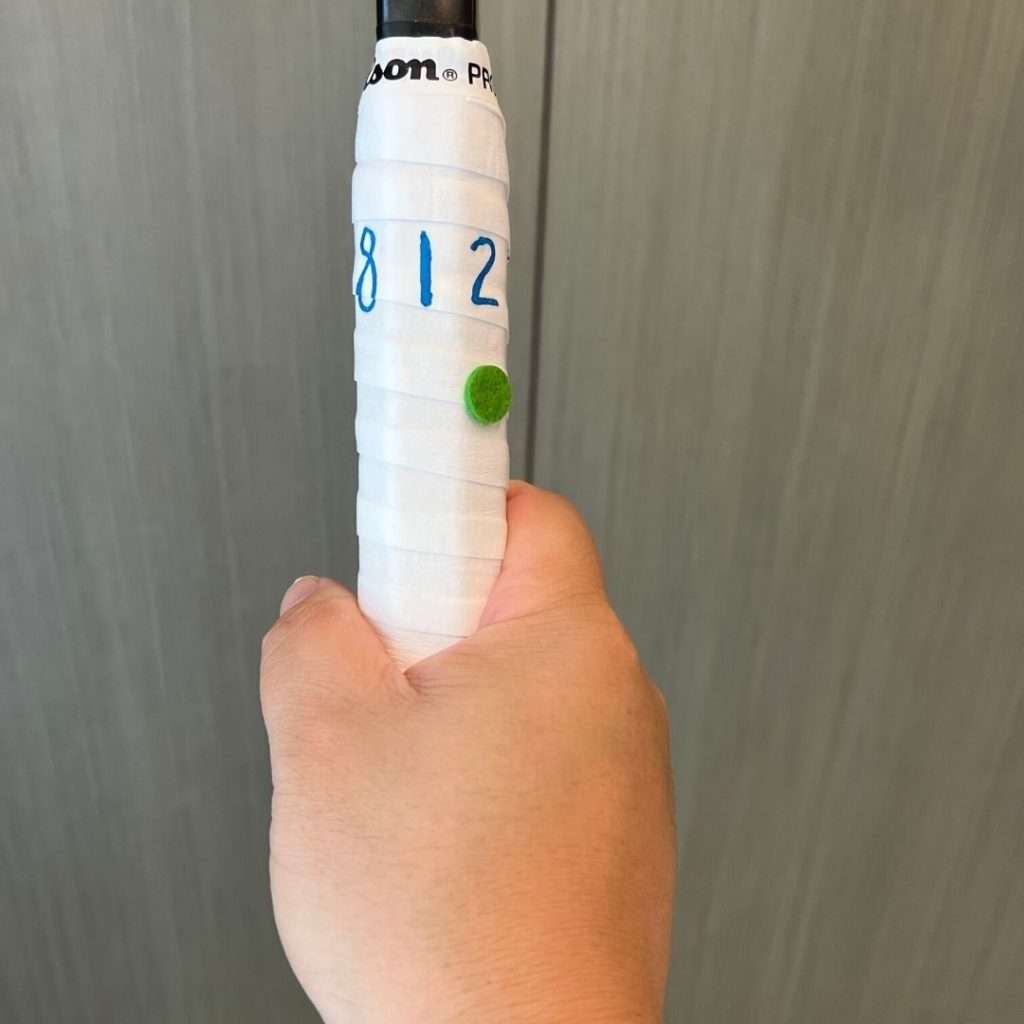The continental grip is commonly referred to as the hammer grip or chopper grip and is necessary for many tennis strokes including the serve, volley, overhead, drop shot, and slice.

This article will provide an overview of the Continental Grips, including potential benefits and effective techniques for mastering them.
What is Continental Grip in Tennis?
The continental grip is a universal tennis grip used for serves, volleys, overheads, drop shots, and slices. Apart from the forehand and backhand, all other strokes are typically done with the continental grip.
How to Hold the Continental Grip (3 Easy Steps)
1. Know the Racket Handle


The tennis racket handles are octagonal, with 8 bevels from 1 to 8 marked clockwise for a right-hander and counterclockwise for a left-hander as the dominant hand.
2. Index Finger Knuckle

Locate the knuckle of your index finger, which will be used as a reference point on the bevel of the racket handle.
3. Holding the Continental Grip

Place the knuckle of your index finger on the racket handle bevel number two.
“An easier way to hold the continental grip is by placing your racket on the floor and picking it up by its handle in a natural manner. This should result in correctly holding the continental grip.“
Why is Continental Grip So Important?
The Continental grip is used to hit a broad array of shots, including volleys and serves, providing players with greater control of their shots compared to other grips. This grip eliminates the need to switch grips for different shots, which is important for tennis players of all skill levels.
Shots You Can Hit with the Continental Grip
These are the typical shots you can play with a continental grip.
Serve

The serve is an essential part of tennis, as it is the starting point for each rally. Besides, it’s one of the best winning shots to learn with. The typical grip for the serve is the continental grip, which provides better control over the direction and power of the shot.
Volleys

Volleys are a type of shot in tennis that involve hitting the ball while it is still in the air. This shot requires quick reflexes and agility to execute properly, as it has to be done in a split second.
To achieve this, players need to use the continental grip when playing both forehand and backhand volleys. To increase stability for a backhand volley, you can slightly rotate the grip counterclockwise.
Slice

The continental grip is often the most comfortable and effective wrist position for the slice. It can maximize the speed, generating a solid wall-like face against the incoming ball.
Overhead

The power stroke is essential for hitting high balls with precision and strength. Using the continental grip can provide more control when dealing with moonballs or lobs.
Drop Shot

A drop shot requires an underhand technique which gives the ball extra spin, making it bounce lower than usual when it lands on the court. The continental grip is effective for creating backspin on the ball.
Should I Use the Continental Grip?
Yes, definitely. A debate may occur, but when beginning to play tennis, it is often necessary to start with the accepted and proven technique in order to improve.
The way you hold the racket is the initial step when learning the strokes. This is considered one of the simplest aspects to learn compared to steps, stances, control, and power.
Tips About the Continental Grip
Practicing Grip Changing
An incorrect continental grip can occur if an individual switches their grip during practice or games, which may be a challenge for beginners.
Practicing the grip-changing technique is necessary in order to be able to quickly and effectively transition to the continental grip during matches without visual confirmation.
Adjustments for Volleys
You may experience a lack of stability and support when holding the racket this way. To enhance the back support of the continental grip, rotate the grip clockwise for forehand volleys and counterclockwise for backhand volleys. Additionally, the bottom of the hand can move up slightly for better stability.
In Conclusion
The continental grip is like a swiss army knife for a variety of shots in tennis. It also eliminates the need to switch grips for different shots other than forehand and backhand grips. With practice and adjustments, you can become proficient with this grip and improve your strokes on the court.
